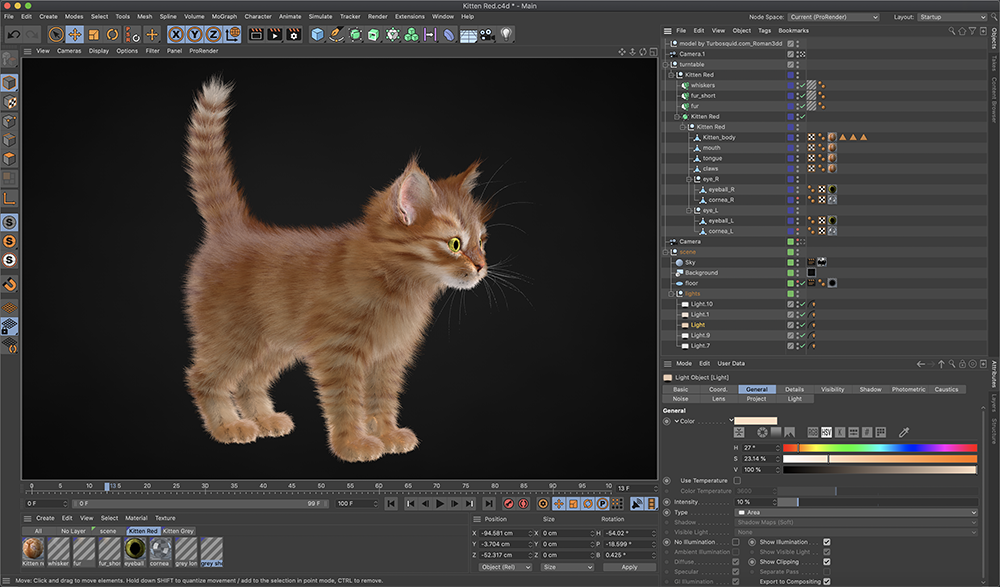The art of 3D animation and visual effects (VFX) has come a long way since its inception. It has revolutionized the world of entertainment, making it possible to create immersive experiences that captivate audiences. Whether you’re a filmmaker, game developer, or a creative professional, having access to the right tools is essential to achieving your vision. In this comprehensive guide, we’ll dive into the top 3D animation and VFX tools that industry experts rely on for their projects.
1. Autodesk Maya: The Industry Standard
When it comes to 3D animation and VFX, Autodesk Maya is often considered the gold standard. This powerful software has been an integral part of the industry for many years. It’s used in everything from animated feature films to video games. With Maya, artists can create stunning character animations, dynamic simulations, and realistic lighting. Its extensive toolset and robust features make it an essential choice for professionals in the field.
2. Blender: Open Source Excellence
Blender is a remarkable 3D modeling and animation tool that stands out for being open-source and free. Despite its affordability (or lack thereof), Blender is a feature-rich software that can easily compete with its commercial counterparts. Its user-friendly interface and active community of developers make it an attractive option for both beginners and experienced artists. Whether you’re working on character animation or architectural visualization, Blender has got you covered.
3. Cinema 4D: The Versatile Option
Cinema 4D is another industry favorite that’s known for its versatility. This software is particularly popular among motion graphics artists and designers. It excels in creating eye-catching 3D animations and is widely used in the advertising industry. Cinema 4D offers a user-friendly interface and a range of tools that make it accessible to both 3D veterans and newcomers. With its intuitive features, it’s an excellent choice for those who want to create stunning motion graphics.
4. Houdini: Unleash the Power of Procedural Effects
Houdini is a software powerhouse when it comes to VFX. What sets it apart is its focus on procedural generation and dynamic simulations. With Houdini, artists can create complex visual effects that react to various parameters and conditions. It’s the go-to choice for VFX artists working on explosions, destruction sequences, and fluid simulations. Houdini’s node-based workflow gives users a high level of control and flexibility, making it an essential tool for VFX professionals.
5. ZBrush: Mastering Digital Sculpting
While the previous tools focus on animation and VFX in a broader sense, ZBrush is all about digital sculpting. This software is beloved by character artists, game developers, and anyone involved in creating 3D characters and creatures. ZBrush provides a unique approach to digital sculpting, allowing artists to work with high-resolution models and detailed textures. Its powerful brushes and dynamic tessellation make it the ultimate choice for digital sculptors looking to bring their creations to life.
6. Adobe After Effects: Enhancing Post-Production
While Adobe After Effects may not be a 3D animation software in the traditional sense, it plays a crucial role in the world of VFX and animation. After Effects is used for compositing, motion graphics, and enhancing post-production visuals. It’s the go-to choice for adding special effects, color correction, and text animations to your videos. The seamless integration with other Adobe Creative Cloud applications makes it a valuable addition to any animator’s toolkit.
7. Unity and Unreal Engine: Game Development Powerhouses
For those in the game development industry, Unity and Unreal Engine are indispensable. These game engines offer not only powerful 3D rendering capabilities but also real-time interactivity. Unity is known for its accessibility and versatility, making it a popular choice for indie game developers. On the other hand, Unreal Engine boasts stunning graphics and is widely used in the creation of high-end games and simulations. Both engines have a wealth of resources and communities to support developers.
8. Substance Painter: Texturing Made Easy
Creating realistic textures is a critical aspect of 3D animation and VFX. Substance Painter is a tool designed to simplify the texturing process. With its user-friendly interface and a library of materials, it allows artists to paint and texture 3D models quickly and with precision. Substance Painter has become an industry standard for creating materials and textures for games, films, and architectural visualizations.
9. Nuke: The Compositing King
Nuke is a professional compositing and VFX application used in the post-production of films and television shows. It’s renowned for its node-based workflow, which provides an unparalleled level of control and flexibility in compositing and image processing. Nuke is a favorite among compositing artists who demand high-quality results and efficient workflows.
10. Marmoset Toolbag: Real-Time Rendering
Marmoset Toolbag is a real-time rendering and presentation tool that’s favored by artists and designers for showcasing their 3D models and animations. With its real-time lighting and material editing, artists can create stunning, interactive presentations of their work. Whether you’re working on character models or product visualizations, Marmoset Toolbag makes it easy to showcase your creations in a realistic and captivating way.
In the fast-evolving world of 3D animation and VFX, having the right tools is essential to stay competitive and create cutting-edge visuals. Whether you’re an aspiring artist, a seasoned professional, or somewhere in between, there’s a tool that suits your needs and budget. So, choose the one that resonates with your creative vision and embark on a journey to bring your wildest 3D animations and VFX dreams to life.
This list of software tools is by no means exhaustive, but it should provide a solid starting point for anyone looking to explore the exciting world of 3D animation and VFX. As technology continues to advance, so too will the capabilities of these tools, pushing the boundaries of what is possible in the realm of digital art and entertainment.


